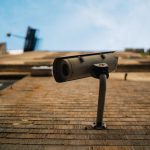A reliable power source during outages is fundamental to occupant well-being. Inverters with emergency lighting fulfil this critical need, providing immediate and sustained illumination when mains power fails. These devices ensure that essential lighting remains operational, enabling safe evacuation and minimising potential hazards. In modern constructions, these systems are often integrated with building management systems for enhanced oversight.
Inverter Basics
An emergency lighting inverter acts as a crucial power backup. It converts stored battery energy into an alternating current, which powers the building’s designated emergency light fixtures. This process begins automatically upon detection of power loss, providing a seamless transition to backup power. They exist to ensure that lighting circuits remain fully operational during a power failure. The battery systems within the inverter are often designed with deep cycle capabilities to allow for sustained output.
Power Backup Reliability
The core function of these systems is to provide consistent power during blackouts. This reliability is vital for maintaining clear exit pathways and preventing disorientation. A consistent power supply means that the emergency lighting will function for the time required by regulation. In critical infrastructure, such as hospitals, the systems are designed to have extended run times to allow for the movement of the patients.
Instant Light Activation
In emergency situations, every second matters. Rapid activation of emergency lighting is crucial for safe evacuation. Inverters provide near-instantaneous power transfer, ensuring that lights illuminate without delay. This instantaneous reaction time allows for a much safer exit from a building. Modern inverters use solid-state switching to improve the speed of transfer.
Safe Exit Pathways
Clear and well-lit exit routes are paramount during emergencies. Inverters maintain illumination along these pathways, allowing occupants to walk safely to designated exits. This safe passageway is required by building regulations. The systems are designed to provide even illumination to prevent dark spots. The lighting fixtures connected to these systems are often designed to provide a wide beam angle.
Reduced Panic Risk
Sudden darkness can cause panic, which hinders safe evacuation. Reliable emergency lighting lowers this risk by maintaining visibility, allowing occupants to remain calm and follow established exit strategies. A calm, orderly exit is a much safer exit. The systems are often designed to work with central monitoring systems that alert building staff to power failures.
Fire Safety Support
Smoke compromises visibility in fire incidents. Inverters ensure that emergency lights remain operational, even under such conditions. This function aids both firefighters and building occupants. The systems are often designed to work at high ambient temperatures. Many inverters are designed to work with fire alarm systems so that lighting is maintained during fire alarms.
Operational Continuity
Beyond evacuation, inverters support the continuation of essential operations. Uninterrupted power maintains vital systems in critical infrastructure, such as hospitals or data centres. This continuity minimises disruption and ensures the continued function of crucial services. These systems are designed to have redundant components to increase reliability. They are often connected to data logging systems to allow for later analysis.
Code Compliance
Regulations require that buildings maintain functional emergency illumination. Inverters assist in meeting these obligations, ensuring that properties adhere to safety standards. Thus, compliance protects occupants and minimises legal liabilities. So, regular inspections of the systems are required to ensure compliance.
An emergency lighting inverter is integral to building safety as it offers reliable, immediate, and sustained illumination during power failures. This capability enhances evacuation procedures, minimises panic, and supports essential operations. By adhering to building regulations, these devices contribute to a safer environment for all occupants.







